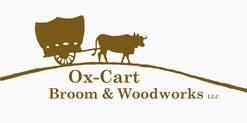|
I mentioned in an earlier blog that we were planning on tapping birch trees after the maples had finished running for the season. After a month and a half of hauling sap buckets and keeping an outdoor fire going day after day from sunrise to hours after sunset for producing our maple syrup, it was a daunting task to keep it up for what we were referring to as “birch bush”. I’m not sure how it happened, but sometime during our conversations about whether we wanted the birch syrup enough, we decided it would be more fun to try making a birch beer (the alcoholic type, not a soda) instead of more syrup. I think that our motivation behind this was mostly to avoid having to boil our sap all the way down to syrup, which for our birches would have meant boiling about 100 gallons of sap to produce 1 gallon of syrup! I’ve been an avid fermenter and brewer for about nine years now, so this did not seem to be any extraordinary idea – a little research and we thought this could be a fun experiment! I did a little online searching on making “beer” from sap (I must disclose now that this is not true beer as it does not include any grain, however the alcohol content ended up around 4% and I did add hops, so I feel that it is more appropriate to describe this beverage as a “beer” rather than a “wine” or “champaign”) and found this wonderful article on the NPR website: http://www.npr.org/sections/thesalt/2012/05/15/152694105/vermont-beer-makers-bring-back-old-time-maple-sap-brews Granted this article was on brewing with maple sap and didn’t go into great depth about hop and yeast varieties or sugar percentages, but it provided an interesting historical context for what we were trying to do and gave me that last needed confidence booster that this could actually work. So we got down to it, harvesting about 80 gallons of sap and boiling it down to about 4 gallons, which ended up around 10% sugar content. We then filtered it, added a variety of hops that I thought would go well with the birch flavor and boiled it for about an hour more before adding champaign yeast and leaving it in the fermenter for a few weeks.  Sludge in the fermenter after bottling - still some wood ash along with the yeast... Sludge in the fermenter after bottling - still some wood ash along with the yeast... The birch beer never fermented quite as vigorously as your average beer, taking it slowly and releasing a bubble of air periodically over the next few weeks. As I had no idea how quickly the fermentation would take place, I was sure to use a “satellite fermenter” and hydrometer to test when the sugar content had bottomed out, indicating that all off the usable sugars had been turned into alcohol. After bottling with a little additional sugar to carbonate the beer, we again had to wait while the yeast continued its job of making what we hoped would be an enjoyable summer beverage. After about two months of work, we are very pleased with the result! The beer has a very birch-y flavor (which has been described as tasting of savory minerals) but everyone who has tasted it has also commented on its surprising sweetness. It is unexpectedly dark, probably comparable to a brown ale, and thus far quite lightly carbonated.
This is definitely an experiment I will be repeating, again with birch sap and I would love to try maple sap as well next year! We will continue to get feedback and think about how to improve it for next year… and who knows, maybe when you visit the North Shore in a few years you’ll find our birch beer on tap at the local brewery!
0 Comments
|
Marybeth GarmoeCraftsperson Archives
August 2019
Categories |

 RSS Feed
RSS Feed

